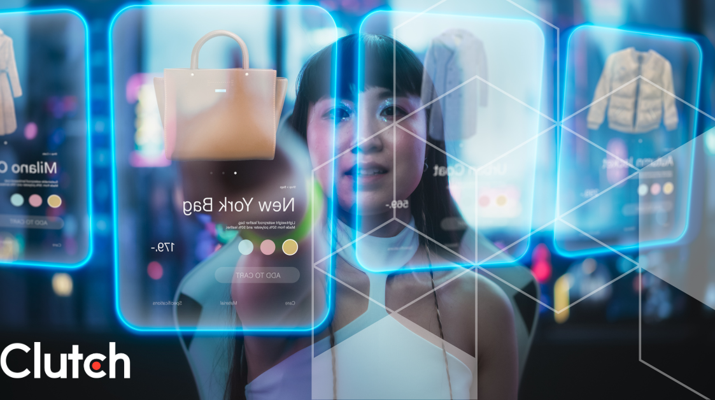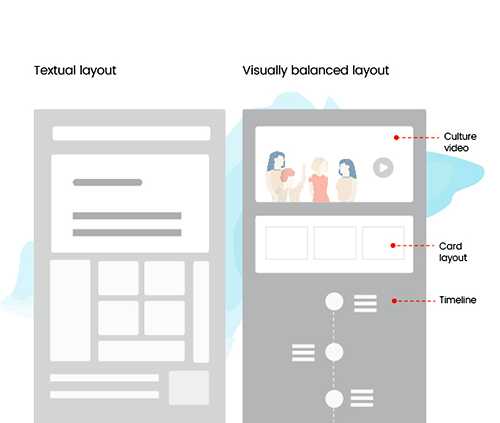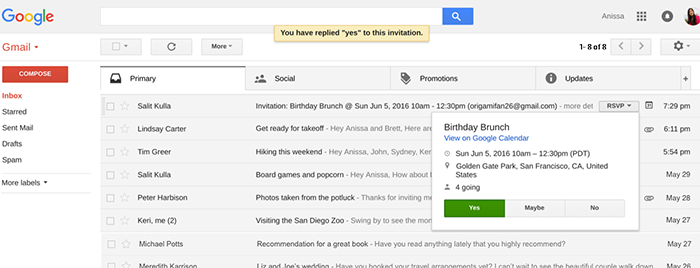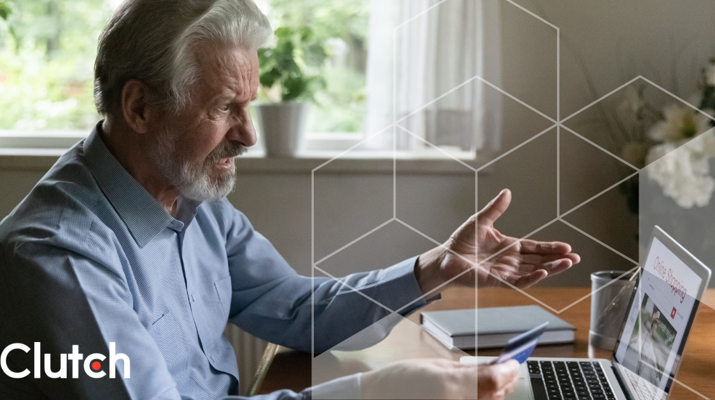

Updated January 2, 2025
Clients and designers obtain the best results when they open clear channels of communication. Whether you're a web designer or are collaborating with one, these four case studies will show you how to work together on a design project.
Updated August 2, 2022
For the design process, the client-designer relationship is crucial.
Looking for a Web Design agency?
Compare our list of top Web Design companies near you
Clients and designers obtain the best results when they open clear channels of communication. Whether you're a web designer, graphic designer or are collaborating with a design freelancer, these four case studies will show you how to work together on a design project.
The relationship between a designer and client depends on whether they can gauge each other and properly communicate their thoughts. That sounds easy, but it’s not.
I began my design career as a visual designer five years ago, when user experience design was a new field in India. Today I lead the design team at Lollypop, a design studio. During my career, I’ve worked with many clients, and I’ve encountered various communication problems, even with good clients.
In this article, I’ll share the best way to overcome these problems from a designer standpoint. I also include suggestions for clients on how to get the best from designers.
I worked on a website redesign project for a well-established company that helped guide startups in the Bay area.
The clients had been in business for over a decade and had been using a template-based website. Though the stakeholders emphasized that they wanted a “modern” redesign, they couldn’t define what “modern” meant to them when we asked.
For a designer, a modern design is one that’s in tune with current technology and trends that are gaining momentum. I decided to create a modern design based on my designer’s understanding of the word to see if the clients liked it.
"A modern design is one that’s in tune with current technology and trends that are gaining momentum."
Next, I created two mood boards of potential end results to show my clients. One mood board was a flat, simple card layout design that focused on text. The second was more experimental and included dynamic, trending elements such as gradients, a split layout, and an embedded .svg file, or animated graphic, at the top.

When I presented my designs, I could tell that my clients felt apprehensive about the second version. However, the branding in that version suited the clients’ vision. Since my clients helped startups, which are on the cutting edge of technology, I felt that a tech-savvy design would help my clients gain the trust of budding businesses.
Since the stakeholders were nervous, I prepared a second presentation in which I used real-life examples of big brands already using designs like my own. Eventually, the clients decided on my “modern” redesign.
Showing your work to clients will help you understand your clients’ aesthetic better.
That way, if you have to go in a new direction or start over entirely, you figure that out early in the process rather than later.
Ensure that during this aspect of design work that there is open communication.
Top-notch presentation skills will engage your clients and allow you to educate them on your thought process.
Concrete examples of existing designs or trends, as well as data from surveys and research, can prove that a certain approach is worthwhile. Make sure to work these into your presentations and workflow.
Also, include many examples of your own work, and use them to explain your thinking. When I explained to my clients why I had chosen a certain gradient or font, I showed them my exact thought process.
It’s good to be cautious, but caution is sometimes limiting. To understand different perspectives, ask your designer frequent questions and share your feedback.
You know your audience and brand identity best, but designers offer useful feedback on how your audience perceives design elements.
Not all clients speak design. If you expect your clients to already have an expert-level understanding of design, you may encounter miscommunication, which can impact an otherwise good relationship.
For example, I created designs for some successful IT professionals. They wanted us to redo their website design, and I began by asking what problem the clients wanted to solve.
As we talked, we realized that the company’s fundamental issue was the way they came off to applicants. Applicants viewed the company as old-fashioned and boring, but this was far from the truth. Now I knew where to start: discovering why the company gave off this incorrect impression.
Next, I asked the clients to name websites they enjoyed using. Their answers:
These websites are simple and prioritize user experience, so that’s what I focused on as I created my clients’ redesign.

The mockups I made were clean and uncomplicated, but featured micro-interactions, or minor animations that play when users interact with certain elements.
Images and videos showed off the client’s capabilities, services and culture. These graphic elements highlighted the company’s fun-loving ethos, everyday activities, and working environment, which all suggested to applicants what life in our client’s office would look like.
In addition, my team planned a workshop for the company’s employees so that they all understood our design approach. By the time we’d finished, the entire company was on board with the new design.
In the end, the IT company received an overwhelming response about the design solution from applicants.
Sometimes, clients don’t know exactly what they want. Your job is to help them by showing them concrete solutions that can work with their business goals. Ask them what they want to achieve with a redesign.
In the example above, we discovered that most applicants perceived the IT company as an old-school workplace, so we designed a website with custom video and photography that communicated the office’s behind-the-scenes life.
Remember that your clients may be uncomfortable working with design. Begin the design process by asking your clients to name familiar designs they like or don’t like.
"Your clients may be uncomfortable working with design."
Don’t just redesign your website or your brand because someone you know is doing it. Design is meant to solve problems, but it isn’t a panacea. What specifically are you solving with design? Make a list of concrete issues you hope a redesign will help fix.
In large organizations, hierarchy plays an important role. Sometimes you have to communicate with many stakeholders, each of whom has a say.
This kind of communication can cause an information gap, since discussions spread out among many people with limited design knowledge.
I encountered this problem during a recent project. There were many decision-makers, and my main point of contact had limited design knowledge. As a result, I sensed a disconnect whenever I presented my designs.
What’s more, I didn’t know how to interpret the decision-makers’ feedback. They used phrases like “not beautiful enough” and “the wow factor is missing,” but I didn’t know what those meant.
I believed in my designs, though, as well as the power of group communication. I asked the stakeholders for an all-hands meeting to solve the issue.
During the meeting, I explained everything about my designs, including interactions, animations, and my thought process. Since all decision-makers were in the room, we could zero in on required changes. Ultimately, the project was a success for the client’s business.
A healthy, results-oriented design discussion means that all parties can decide on priorities. To gain everyone’s attention, show confidence in your work. Politely but firmly address stakeholders’ questions, but vouch for what you’ve made!
If you want designers to help you grow your business, you have to give them time and attention.
Think of designers as new but experienced members of your company who require your attention during strategic planning. Designers don’t need much of your time, but an hour of undivided attention during a presentation can do wonders.
Many clients do have a background in design and user experience. I particularly enjoy these clients because they make me challenge my own design skills.
During a project, I worked with a financial technology (fintech) company that let me experiment with design and technology.
The company questioned every design I made. I felt defensive several times, but my clients’ expertise and pointed questions made me spend more time on the project.
For example, the clients asked for .svg animations, interactive elements on their banner, and specific icons. I found myself using precise language as I described my designs, and I realized that my creative energy was combining with that of my clients’.
In the end, we co-created a design that satisfied all of us.
You can’t find your limits until you challenge yourself – at least, that’s what I learned on this project. We need to try new technologies and break out of our usual pattern.
When clients challenge you, don’t think about it as an ego battle. Rather, consider it an opportunity to unearth your potential.
If you have a background in design, ask your designer as many questions as you can without overwhelming them. Give them all the ideas that you have, no matter how granular; just don’t expect them to take every idea and suggestion.
The best design relationships use each party’s abilities and knowledge to design an experience that users will enjoy.
You might be a great designer or a brilliant entrepreneur, but without empathy and a focus on communication, your redesign efforts may be in vain.
When you ask questions, communicate your difficulties, and willingly accommodate each other, you can develop an excellent working relationship that will lead to designs that satisfy you both.
Browse our directory of web designers.
Additional Reading:


